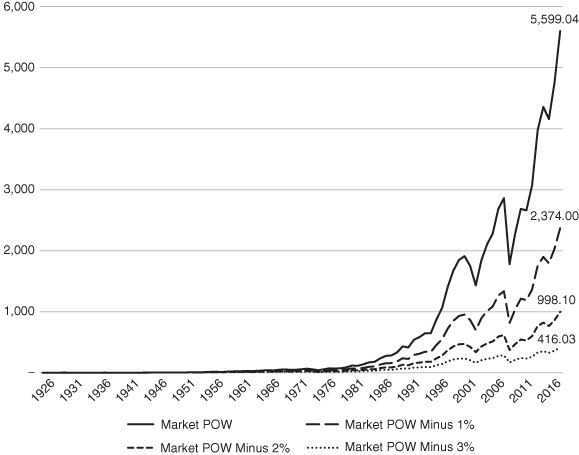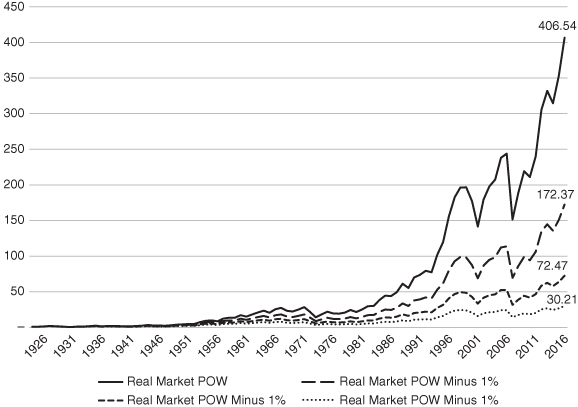6TRANSACTION COSTS, FEES, AND TAXES
The ultimate value of an investment is determined by how much it contributes to your consumable wealth. That depends not only on how much the value of a security or portfolio increases, but also on what fraction of that increase you get to keep. There are three basic reasons why you keep less than 100%: transaction costs, fees, and taxes. We will take a look at each in turn, but before that it is helpful to get an idea of how important these factors might be.
Exhibit 6.1a plots the nominal path of wealth (POW) for the Center for Research in Securities Prices (CRSP) index, which we saw in Chapter 1. The three lines below the top line show what the POW would look like if transaction costs, fees, and taxes reduced the returns on the market index by 1 percentage point, 2 percentage points, and 3 percentage points. Exhibit 6.1b repeats the exercise using real returns.
EXHIBIT 6.1a The impact of cost on performance: nominal stock market POWs 1926–2017.

EXHIBIT 6.1b The impact of cost on performance: real stock market POWs 1926–2017.

The exhibits show that the long-run impact of the costs is dramatic. The reason is that unlike stock returns, which are highly volatile, costs are a consistent drag every year. While in any particular year costs ...
Get The Conceptual Foundations of Investing now with the O’Reilly learning platform.
O’Reilly members experience books, live events, courses curated by job role, and more from O’Reilly and nearly 200 top publishers.

